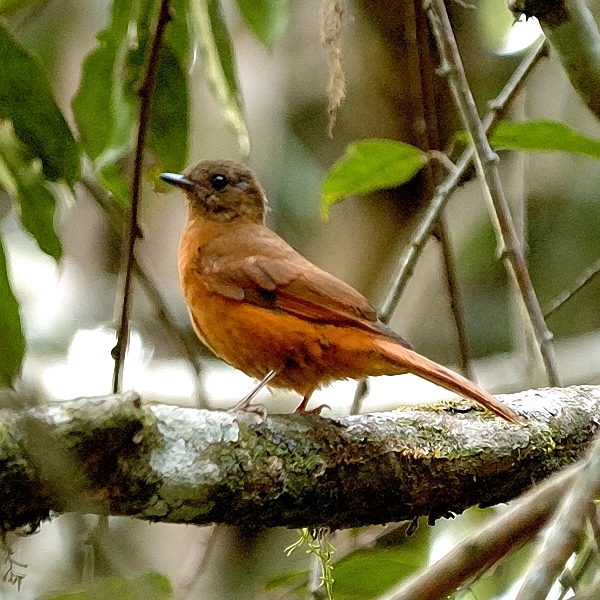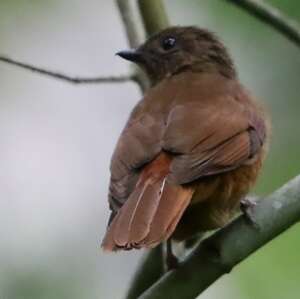The Rufous Flycatcher-thrush: A Closer Look At Stizorhina Fraseri Vulpina
Share
The Rufous Flycatcher-Thrush, scientifically known as Stizorhina fraseri vulpina, is a captivating bird species belonging to the family Muscicapidae. This article delves into the taxonomy, habitat, behavior, and conservation status of this intriguing bird, providing birdwatchers and enthusiasts with valuable insights.

Taxonomy
The Rufous Flycatcher-Thrush is classified under the order Passeriformes, which encompasses a vast array of songbirds. Within this order, it belongs to the family Muscicapidae, suborder Oscines, and subfamily Turdinae. The species was first described by Reichenow in 1902, and its type locality is noted as Bundeko in the Sembiki Valley. The subspecies vulpina is primarily found in the northern and eastern regions of the Congo, Ruanda, and western Uganda.
Physical Characteristics
The Rufous Flycatcher-Thrush is characterized by its striking plumage, which features a rich rufous coloration. This vibrant hue is particularly prominent on its underparts, while its upperparts are generally darker, providing a beautiful contrast. The bird's size is moderate, with a robust body and a relatively long tail, which aids in its agile movements through the forest canopy.

Habitat
This species thrives in forested areas, preferring dense undergrowth and the lower strata of tropical and subtropical forests. The Rufous Flycatcher-Thrush is primarily found in the northern and eastern Congo, Ruanda, and western Uganda, where it inhabits moist, shaded environments. These habitats provide ample cover and food sources, essential for the bird's survival.
Diet
The diet of the Rufous Flycatcher-Thrush mainly consists of insects and other small invertebrates. It forages actively among the foliage, using its keen eyesight to spot prey. Occasionally, it may also consume fruits, particularly during the breeding season when energy requirements increase.

Behavior
The Rufous Flycatcher-Thrush is known for its melodious song, which it uses to communicate with potential mates and establish territory. This species is generally solitary or found in pairs, often seen flitting through the underbrush in search of food. Its behavior is characterized by agility and quick movements, making it a delight to observe for birdwatchers.
Reproduction
Breeding typically occurs during the rainy season when food is abundant. The female constructs a cup-shaped nest, usually hidden in dense vegetation, where she lays a clutch of eggs. Both parents are involved in caring for the young, providing food and protection until they fledge.

Conservation Status
Currently, the Rufous Flycatcher-Thrush is not considered endangered, but habitat loss due to deforestation poses a significant threat to its population. Conservation efforts aimed at preserving forest habitats are crucial for ensuring the survival of this species and its ecosystem.
Interesting Facts
- The Rufous Flycatcher-Thrush plays a vital role in its ecosystem by controlling insect populations and dispersing seeds through its diet.
- Its melodious song is often heard during dawn and dusk, adding to the symphony of sounds in its forest habitat.
Birdwatching Tips
For birdwatchers eager to observe the Rufous Flycatcher-Thrush, visiting its natural habitat in the northern and eastern Congo, Ruanda, or western Uganda during the breeding season is ideal. Look for them in dense undergrowth, and listen for their distinctive calls, which can help locate them amidst the foliage.

The Rufous Flycatcher-Thrush, with its vibrant plumage and enchanting song, is a remarkable species that embodies the beauty of the avian world. By understanding and appreciating this bird, we can contribute to its conservation and the preservation of its forest habitat, ensuring that future generations can enjoy its presence in the wild.